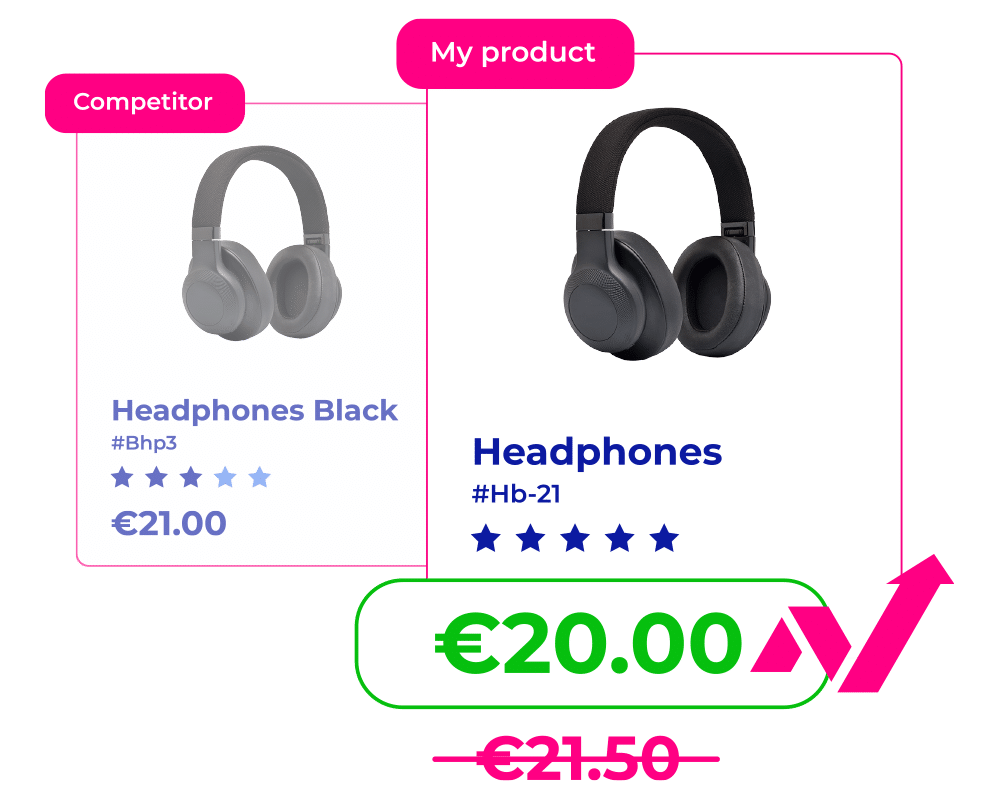There are three metrics that all e-commerce must follow to be economically viable: the profit margin, the price index and the conversion rate. The profit margin-the metric that indicates the difference between the cost of production and the final selling price of a product-is the most important and sensitive of the three. We never recommend increasing the conversion rate to the detriment of the margin, because without profitability there is no point in your e-commerce. One of the benefits of dynamic pricing is to improve the prices of your products and therefore be more competitive.
Improving the profit margin seems a simple task in theory, since it has two modifiable variables: the cost of the product and the final selling price. To modify the first of the two variables, it is necessary to have negotiating power over the suppliers. Knowing in depth the vertical in which your store is and knowing what the purchase prices of your competitors may be can serve as a reinforcement to your arguments to get more competitive purchase prices. The second variable, the final sale price, is a more complicated aspect to change, since in general users are reluctant to raise the prices of products. Therefore, you will have to justify that price increase by offering in exchange beneficial elements for users.
If you have a lot of products in your store, manually changing the price of each product is a tedious and inefficient task that will waste your time and money. To do it automatically you have pricing tools to improve price competition. This is one of the greates benefits of dynamic pricing. This software allows you to add your product feed and modify it dynamically according to the strategy of your competitors. This system updates the price of your catalogue based on rules you have established.
Benefits of dynamic pricing: Understanding the market
One of the benefits of dynamic pricing is that the software allows you to identify the minimum and maximum prices of the competitors you have chosen, the average price per product and how your items are positioned in reference. The application offers you different analyses that will improve your understanding of the market and the competitors. These are the price range per quartiles, the percentage of your catalogue you have in stock or the distribution of brands in your inventory, all compared to the competition.
Knowing how the market works is vital to implement an effective pricing strategy and identify patterns of behavior of your competitors, which could indicate the use of a specific price strategy.
One other benefit of dynamic pricing software is that it allows you to protect your profit margin by placing red lines above the other rules. Within the application you can save the rules you want to be applied. This is a useful tool in sectors with a high rate of seasonality, such as the toy sector, where sales are concentrated in the month of December, or use it in special sales campaigns, such as Black Friday or Cyber Monday.
You can adjust your profit margin as much as possible to increase conversions without fear of making a loss. Using dynamic pricing for your products is a basic solution to adapt to market changes, and even this tool can give you key knowledge with which you can anticipate major changes in your vertical.






